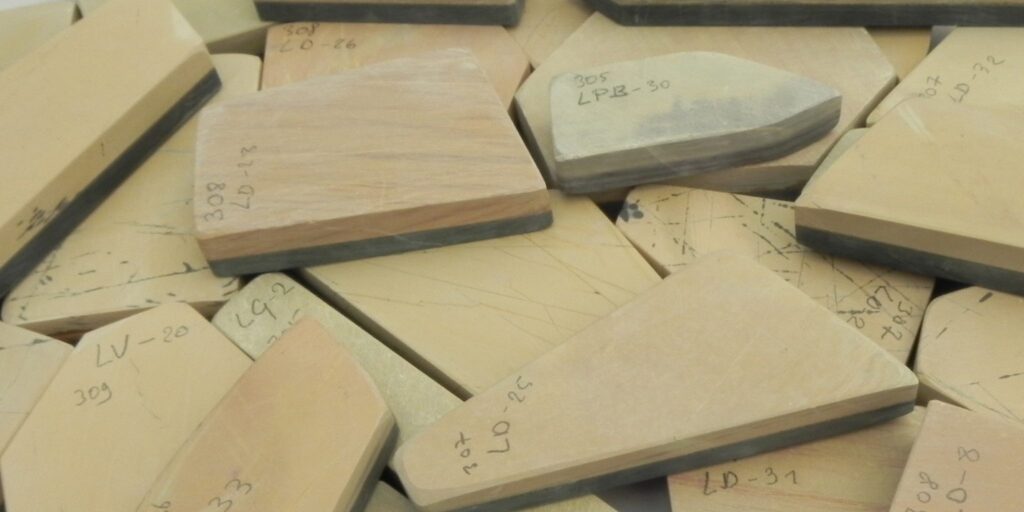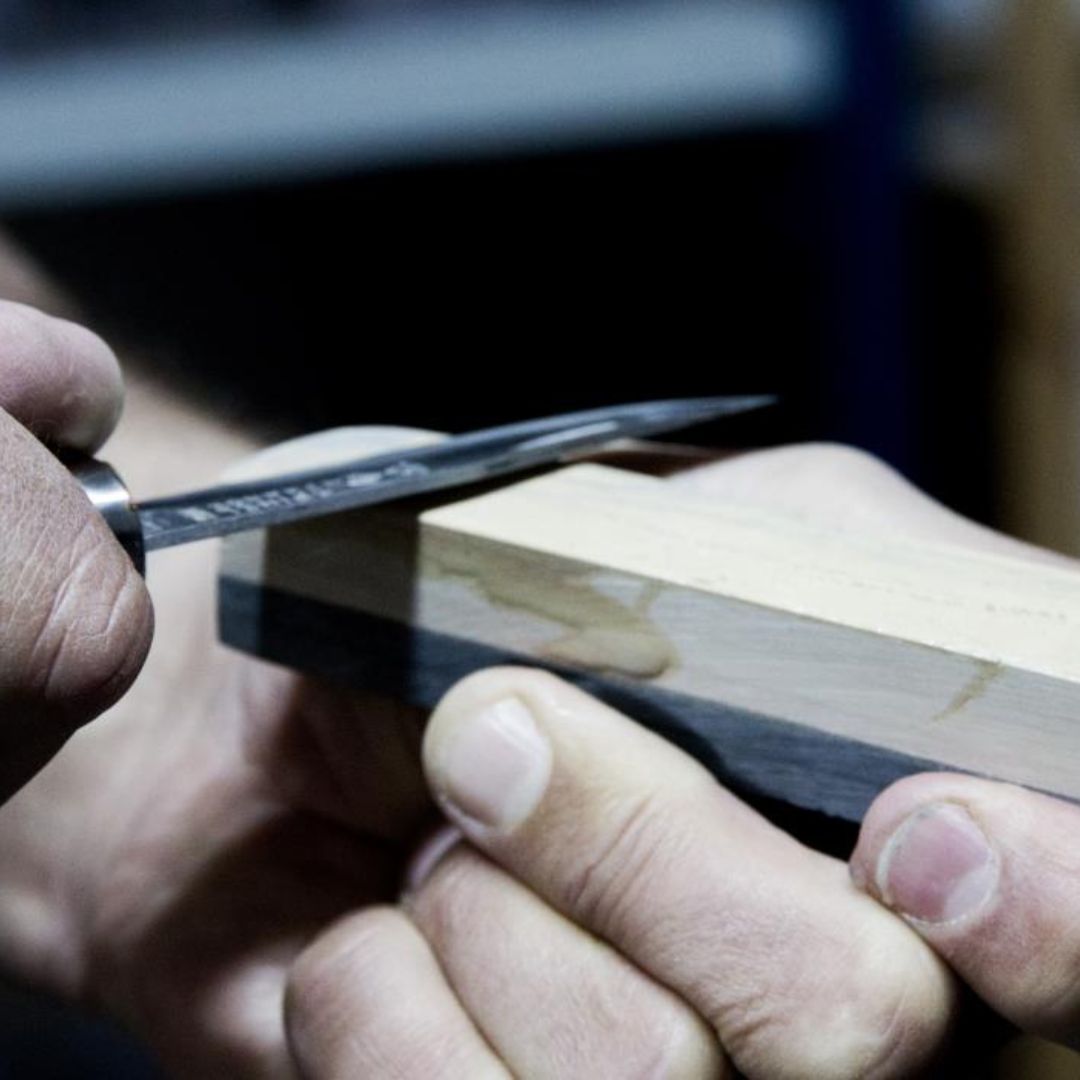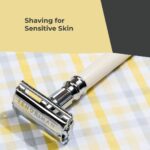Sharp blades require the right tools. Hones, commonly known as sharpening stones, are effective in keeping edges sharp but only if you’re using the proper hone with correct grit.
Types of Hones
There are two basic types of hones; natural and artificial.
Natural Hones
Natural hones are often referred to as coticules. The word coticule comes from the Latin word coticula, which means whetstone. These natural hones, or coticules, come in several different sizes. Their appearance will also differ and no two will look exactly the same due to naturally occurring variations in their appearance.
Common Natural Hones
Belgian Yellow Coticule or Belgian Blue Coticule
Reflecting their origin and substance, the Belgian Coticule is mined from Belgium and they come in both yellow and blue varieties.

Belgian Blue Coticules have a normal grit of 4000 while Belgian Yellow Coticules have a normal grit of 8000 without a slurry or 6000 when used with a slurry (sold separately). Due to their natural origin, some variation in the grit is expected.
Both stones are often used in conjunction, with the blue stone used first and the yellow stone used last. Belgian Yellow Coticules are becoming a bit of a rarity as they are currently being mined from only one quarry in Belgium.

TIP: A lapping stone is recommended to round the long edges of natural hones before use. This helps prevent denting blade during sharpening. Sandpaper can also be used as an alternative to a lapping stone.
Escher German Stones
Escher German Stones came from a quarry that is largely no longer accessible. Most of the quarry where these stones were mined is now a protected nature reserve. Therefore, the number of remaining stones available to the public is extremely limited, and their shapes and sizes are dictated by the veins in the stone. However, it is still possible to obtain vintage stones from resellers.
Japanese Natural Stones
Minded from several quarries in Japan, these stones are categorized into two main groups, Higashi Mono and Nishimono, meaning eastern things and western things, respectively. The eastern stones are generally finishing stones with finer grits, while the western stones are coarser. These too are very quarry as the most prominent quarry closed in 1967 and supply is very limited.
Artificial Hones
Artificial hones are used like natural hones but with less preparation and maintenance. Artificial hones are easier to use and maintain than their natural counterparts as lapping, oiling or soaking are not required before use. These artificial hones are appropriate for wet or dry use, such as Shapton.
These hones are manmade so users won’t experience variation in grit as they would with natural stones. Artificial hones provide a sharp edge that is crisper than natural hones produce. Some users combine a synthetic hone with a natural hone for the best of both worlds.





